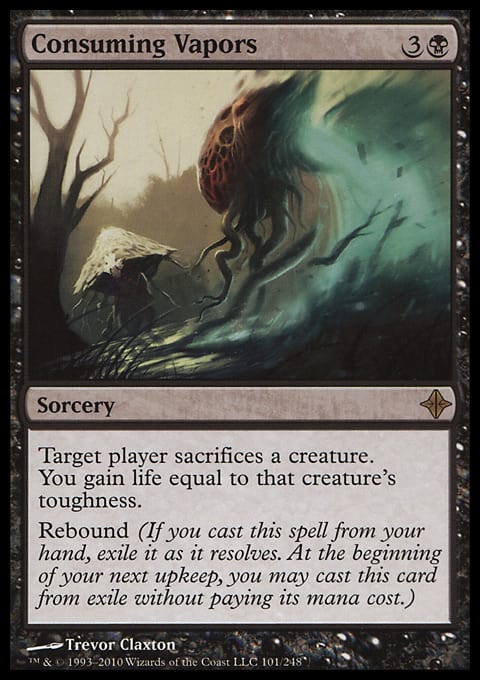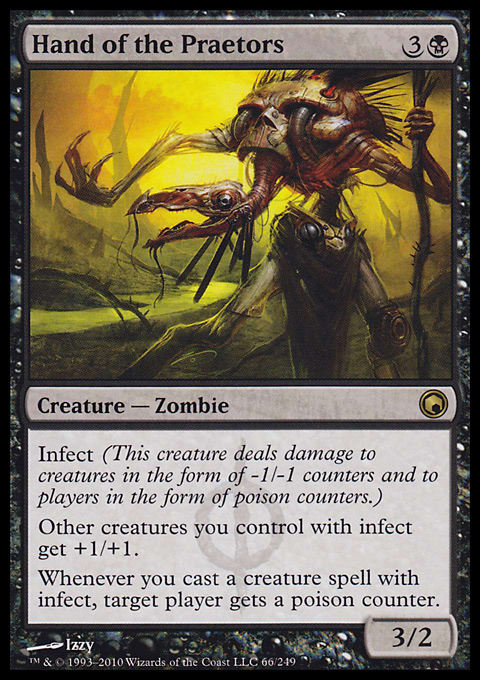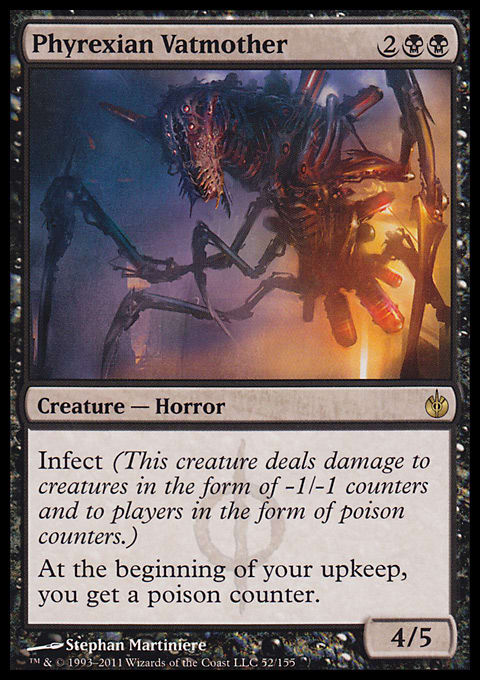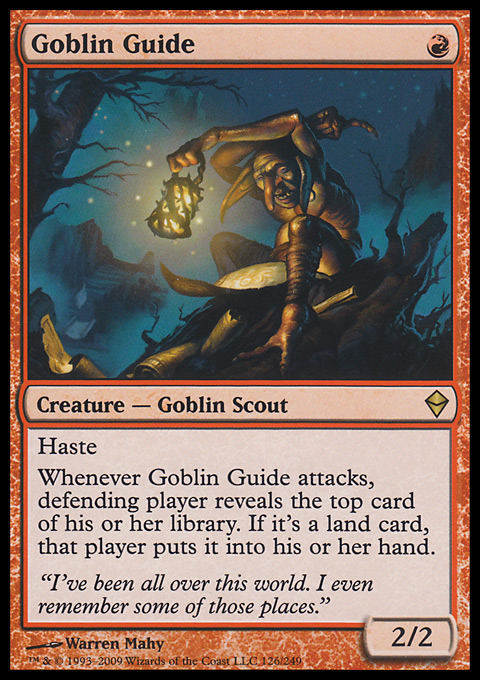One of the themes we’ve explored in this weekly column has been Wizards of the Coast’s ongoing struggle to perfect the entry-level product. Today’s Planeswalker Decks have a long and illustrious evolution, from the failed Rivals Quick Start line, to the Intro Packs which ruled from Shards of Alara (2008) until Eldritch Moon (2016). Today we’re going to look at an entry-level struggle of a different sort, and of Wizards’ valiant if ill-fated attempt to address it.
Mark Rosewater once wrote that one of the two greatest decisions that went into early design and development of Magic was the implementation of a rotating format (the other was what he calls the ‘Golden Trifecta’ of the game’s actual structure). What we now know as ‘Standard’ was then known as ‘Type II’, but it filled precisely the same role — to keep a steady flow of cards out to offset the flow of cards in, allowing the game to remain at a relatively steady power level as more and more cards were introduced into the game. This let them design new sets free of the constraints of having to balance and check every card against every other card, and not have to engage in ‘power creep’ to make new sets attractive.
To be sure, there were some occasional bends and breaks, such as Ravager Affinity in Mirrodin block (2003-04). But overall, Standard has remained Magic’s most accessible and enduring format — albeit not one without its own barriers to entry. The one that loomed largest was the cost, and Wizards came up with a plan to try and ameliorate that beginning in 2011.
It was then, with Mirrodin Besieged, that the Event Deck was unveiled.
Event Decks were intended to be for Standard what the Intro Packs were for new and returning players: a deck to help get you started. You might not be able to win a Pro Tour with one, but they were affordably-priced and intended to at least hold their own at the Friday Night Magic level. The inaugural run set the bar at two 60-card deck and 15-card sideboard, which contained seven rares cards.
Today we’ll be taking a look at the first two Event Decks, which arrived in the middle of Scars of Mirrodin Block. Like the Theme Decks and Intro Packs, these also represent a “fly in amber” snapshot of the Magic environment of the time, but one tied to Standard environment rather than a specific set.
Year: 2011
Set: Mirrodin Besieged
Deck: Infect & Defile
Rares: Consuming Vapors (x2), Drowned Catacomb (x2), Hand of the Praetors, Phyrexian Vatmother (x2)
Infect & Defile ? Mirrodin Besieged Event Deck | Wizards of the Coast
- Creatures (15)
- 1 Hand of the Praetors
- 2 Phyrexian Vatmother
- 4 Corpse Cur
- 4 Necropede
- 4 Plague Myr
- Instants (7)
- 1 Doom Blade
- 2 Deprive
- 2 Mana Leak
- 2 Smother
- Sorceries (9)
- 2 Consuming Vapors
- 3 Preordain
- 4 Foresee
- Enchantments (4)
- 4 Corrupted Conscience
- Artifacts (2)
- 2 Contagion Clasp
- Lands (23)
- 10 Island
- 7 Swamp
- 2 Drowned Catacomb
- 4 Jwar Isle Refuge
- Sideboard (15)
- 3 Deathmark
- 1 Doom Blade
- 3 Flashfreeze
- 2 Go for the Throat
- 4 Negate
- 2 Smother
As the name indicates, Infect & Defile was an infect deck through and through. As you’d hope, the entire creature base of the deck — all fifteen of them — were creatures that offered up poison counters to your opponent rather than actual damage, in the hopes of delivering ten of them and thereby winning the game through this alternate win condition.
The creature complement is relatively focused. Necropedes and Plague Myrs for early damage, with the Myrs pulling double-duty for mana ramping. Then Corpse Curs to recur losses and a pair of Phyrexian Vatmothers as closers that — with an early Myr — can touch down as early as turn three. And if you can find the “poison lord” Hand of the Praetors, so much the better.
This assemblage was backed up by card draw/library manipulation (Foresee, Preordain), countermagic (Deprive, Mana Leak) and a smattering of removal (Smother, Doom Blade, and Mana Leak). You also had a Contagion Clasp to act as a backup closer, letting you proliferate your way to winning if the red zone stalled out, and a full playset of Corrupted Conscience to convert your enemy’s most troublesome creatures to the cause of compleation.
The sideboard offered additional protection against creature-heavy decks, adding in another Doom Blade, two more Smothers, and Go for the Throat. There was also some added countermagic for slower matches (Negate) and some targeted answers in the form of Deathmark and Flashfreeze.
Overall it was a solid concept, but it lacked some of the speed necessary to make the most of infect. Creatures with that keyword tend to be on the smaller side, so you need ways to either pump them up, make them unblockable, remove obstacles in their path, or simply overwhelm with numbers. This deck could remove obstacles, but it often seemed to lag a turn or two behind the decks of the day.
Year: 2011
Set: Mirrodin Besieged
Deck: Into the Breach
Rares: Contested War Zone, Devastating Summons (x2), Goblin Guide (x2), Leyline of Punishment, Spikeshot Elder
Into the Breach ? Mirrodin Besieged Event Deck | Wizards of the Coast
- Creatures (22)
- 1 Spikeshot Elder
- 2 Goblin Bushwhacker
- 2 Goblin Guide
- 4 Goblin Wardriver
- 1 Iron Myr
- 4 Memnite
- 4 Ornithopter
- 4 Signal Pest
- Instants (6)
- 2 Galvanic Blast
- 4 Lightning Bolt
- Sorceries (6)
- 2 Devastating Summons
- 4 Kuldotha Rebirth
- Artifacts (4)
- 2 Darksteel Axe
- 2 Panic Spellbomb
- Lands (22)
- 21 Mountain
- 1 Contested War Zone
- Sideboard (15)
- 2 Unstable Footing
- 4 Searing Blaze
- 2 Act of Treason
- 4 Goblin Ruinblaster
- 2 Into the Core
- 1 Leyline of Punishment
Go go battlecry Artifact aggro! This deck is something of a negative image of the first one. Whereas the infect deck lacked speed but had consistency, this deck has the speed, but could really use more consistency. The Goblin Guide is the perfect case in point.
This is precisely the sort of card that you either run a full playset of, or you run none at all. It’s a fantastic opening play, and a poor one in the late game. To maximize your chances of landing it early (in the hopes that your opponent never even makes it to the “late game”), you want the full set. In fairness, having a full playset of this high-profile card was never a realistic option- Event Decks capped their rare copies at two. Still, it does show how much this deck will be capable of fluctuating due to a suboptimal build.
At its best, you overwhelm an opponent with rapid attacking. With full sets of Memnite and Ornithopter, there’s a good chance of getting one or both in the opening grip. From there it’s either Goblin Bushwhacker, Signal Pest, or Goblin Wardriver to pump up the offense, with Lightning Bolts and Galvanic Blasts to keep the attack lanes clear.
Once your offense is in place, you can swap excess resources for more attacking pressure through Devastating Summons and Kuldotha Rebirth. The deck runs lean on land (just 22), so it doesn’t need a lot to function. If you find you’ve drawn too much, getting a couple more robust bodies will suit the deck more. If breadth, not depth, is what’s called for, popping an artifact to the Rebirth can give you an expanded field, which can then punch above its weight with the battle cry effects.
In addition to the artifact creatures, there are a few trinkets coming along for the ride. The Panic Spellbomb is a one-shot Falter effect that can help get your attackers through, while offering the tantalizing possibility of drawing another card. The Darksteel Axe is a cheap creature buff that can help some of your 0-power creatures like the Ornithopter and Signal Pest do a little extra damage on their own.
Finally, a Contested War Zone gives one last source of attack buffing you your army. What’s interesting about the War Zone’s design is that even if your opponent manages to steal it from you by connecting with a creature, they can’t get as much benefit out of it unless you fail to connect the following turn (and if that happens, you’ve got bigger problems anyway). It’s a clever bit of design that rewards you not for taking something, so much as managing to hold onto it.
The sideboard offers some ways to shore up the deck against potential weaknesses. An Unstable Footing and Leyline of Punishment mitigate against damage prevention and lifegain, which was very useful in an environment where the Kor Firewalker saw play. Searing Blaze offered more burn, useful against a creature-heavy opponent, while Into the Core was a hedge against artifacts. Finally, a full playset of Goblin Ruinblasters provided both some threat to an opponent’s non-basic lands (such as Eldrazi Temple) as well as providing another conscript for the field of battle.
The initial formula of Event Deck design would never hold, instead being subject to number of tweaks as Wizards tried to find the right balance between cost and value, but ultimately the product line was doomed. Four years later, in 2015, the plug was pulled after Battle for Zendikar. We’ll explore some of the downsides of the product line in a future post, but it’s always interesting to see the origin of WotC’s various product lines.
Did you play with any of the Event Decks? Did any stand out to you? Have any success at your local FNM with one? I’d love to hear about it, let me know in the comments below!




























